Vera Holme
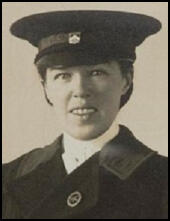
Vera Holme, the daughter of Richard Holme, a timber merchant, was born in Birkdale, Lancashire, on 29th August 1881. According to Elizabeth Crawford, the author of The Suffragette Movement (1999), Holme was "an accomplished violinist and singer" and by 1908 she was a member of the chorus of the D'Oyly Carte Opera Company.
Later that year, Holme joined Elizabeth Robins, Kitty Marion, Winifred Mayo, Sime Seruya, Edith Craig, Inez Bensusan, Ellen Terry, Lillah McCarthy, Sybil Thorndike, Lena Ashwell, Christabel Marshall, Lily Langtry and Nina Boucicault to form the Actresses' Franchise League(AFL).
The first meeting of the AFL took place at the Criterion Restaurant at Piccadilly Circus. The AFL was open to anyone involved in the theatrical profession and its aim was to work for women's enfranchisement by educational methods, selling suffrage literature and staging propaganda plays.
In 1908 Holme also became an active member of the Women's Social and Political Union (WSPU). The following year she worked alongside Annie Kenney, Clara Codd and Elsie Howey in the West of England campaign. During this period she became a frequent visitor to Eagle House near Batheaston, the home of fellow WSPU member, Mary Blathwayt. Her father, Colonel Linley Blathwayt was sympathetic to the WSPU cause and he built a summer-house in the grounds of the estate that was called the "Suffragette Rest".
According to the historian, Martin Pugh, Holme was a lesbian. It seems that Eagle House became a place where these women met. Mary Blathwayt recorded in her diary that Annie Kenney had intimate relationships with at least ten members of the WSPU in her house. Blathwayt records in her diary that she slept with Annie in July 1908. Soon afterwards she illustrated jealousy with the comments that "Miss Browne is sleeping in Annie's room now." The diary suggests that Annie was sexually involved with both Christabel Pankhurst and Clara Codd. Blathwayt wrote on 7th September 1910 that "Miss Codd has come to stay, she is sleeping with Annie." Codd's autobiography, So Rich a Life (1951) confirms this account.
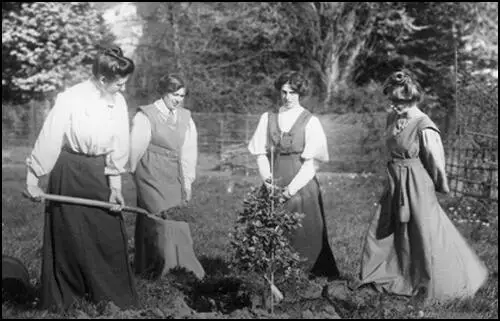
planting a tree at "Suffragette Rest" at Eagle House in 1909.
Emily Blathwayt recorded in her diary that Vera Holme "is a splendid woman and interested in all Linley's subjects and she took up Mary's violin and was very clever with it. She has a beautiful voice and we sang after washing up." However, Sylvia Pankhurst described Holme as "a noisy, explosive young person, frequently rebuked by her elders for lack of dignity."
A wealthy supporter of the WSPU donated money to buy Emmeline Pankhurst a motor car so that she could travel the country in comfort. In August 1909, Vera Holme was appointed as Pankhurst's chauffeur. The author of The Pankhursts (2001): "It is probable that Vera Holme had learnt to drive as a result of touring the provinces with a theatrical company; since driving tests had not been invented the chief requirement was a capacity to cope with the frequent mechanical breakdowns and to deal with horse traffic."
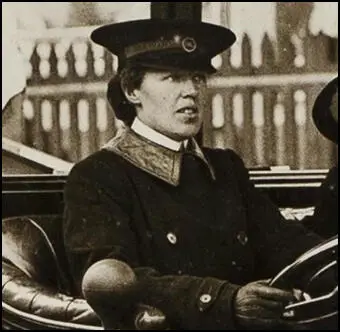
A wealthy supporter of the WSPU donated money to buy Emmeline Pankhurst a motor car so that she could travel the country in comfort. In August 1909, Vera Holme was appointed as Pankhurst's chauffeur. The author of The Pankhursts (2001): "It is probable that Vera Holme had learnt to drive as a result of touring the provinces with a theatrical company; since driving tests had not been invented the chief requirement was a capacity to cope with the frequent mechanical breakdowns and to deal with horse traffic."
In November 1909 Holme appeared as Hannah Snell in A Pageant of Great Women, a play written by Cicely Hamilton and performed by members of the Actresses' Franchise League. She remained active in the WSPU and on 9th May 1910 Colonel Linley Blathwayt planted a tree, a Juniperus Virginiana Aureomarginata, in her honour in his suffragette arboretum in a field adjacent to the house. 1911 she was sentenced to five days' imprisonment on a charge of stone throwing. horse traffic."
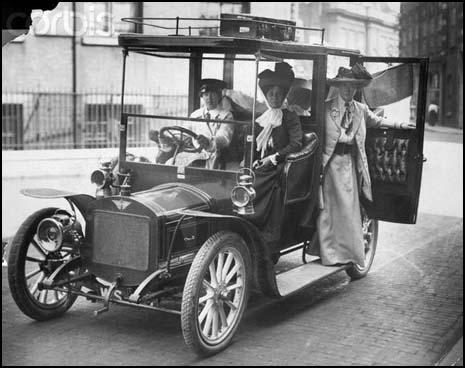
In 1911 Vera Holme began living with Eveline Haverfield. It has been argued by Rebecca Jennings, the author of A Lesbian History of Britain (2007), that Holme was a lesbian and the lover of Haverfield. This view is supported by Emily Hamer, the author of Britannia's Glory: A History of Twentieth-Century Lesbians (1996) who claims that the bed they shared was inscribed with their initials.
On the outbreak of the First World War, Holme supported the decision by Emmeline Pankhurst, to help Britain's war effort. In 1914 Haverfield founded the Women's Emergency Corps, an organisation which helped organize women to become doctors, nurses and motorcycle messengers. Holme was commissioned as a major in the Women's Emergency Corps and in 1915 she was placed in charge of horses and trucks in the Scottish Women's Hospital Units sent to Serbia. In October 1917 Dr. Else Inglis sent Holme back to London in order to deliver a report on the situation of the Serbian Army on the Rumanian Front to Lord Derby, the Secretary of State for War.
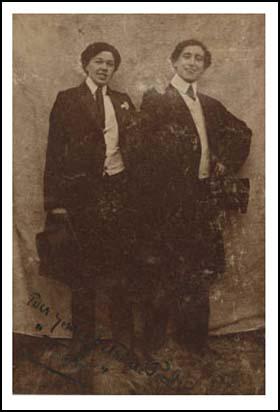
Eveline Haverfield died of pneumonia in 1920. In her will she left Vera Holme £50 a year for life. She went to live Margaret Greenless and Margaret Ker. She also spent a lot of time with Edith Craig, Clare Atwood and Christabel Marshall, who had formed a permanent ménage à trois at their home at The Priest's House, Tenterden. It was Craig who gave Vera Holme the nickname "Jacko". Other visitors included Radclyffe Hall, Una Troubridge, Vera Holme, Vita Sackville West and Virginia Woolf.
After the death of her mother, Ellen Terry in 1928, Edith Craig converted the barn in the grounds of her mother's house in Smallhythe Place, into a theatre. According to Katharine Cockin, the author of Edith Craig (1998): "In 1935 and 1936 the Barn Theatre hosted another anniversary: a tribute to Jacko. On 29 August 1935, the Grand performance in honour of Jacko's Birthday involved Edy, Chris and Tony in comical sketches."
Vera Holme died at 50 St Andrew's Drive, Glasgow, on 1st January 1969 of renal failure and arteriosclerosis.
Primary Sources
(1) Emily Blathwayt, diary entry (9th May, 1909)
Mary (Blathwayt) planted her golden holly near Annie's but in the outer circle, and Jessie Kenney having been to prison planted near Annie's in the inner. Vera Holme also put a tree below Mary's. She is a splendid woman and interested in all Linley's subjects and she took up Mary's violin and was very clever with it. She has a beautiful voice and we sang after washing up. Suffragettes are splendid for any work.
(2) Martin Pugh, The Pankhursts (2001)
It is probable that Vera Holme had learnt to drive as a result of touring the provinces with a theatrical company; since driving tests had not been invented the chief requirement was a capacity to cope with the frequent mechanical breakdowns and to deal with horse traffic.
(3) Rebecca Jennings, A Lesbian History of Britain (2007)
Other wartime occupations actively encouraged younger unmarried women recruits and a number of women who made a significant contribution to the war effort through their work were in relationships with other women. It is difficult to interpret the precise nature of women's close friendships in the absence of explicit evidence as to how the women themselves viewed them, however. Dr Elsie Inglis, founder of the SWH, had lived with Dr Flora Murray for a number of years in Edinburgh, and Drs Louisa Martindale and Louisa Aldrich-Blake also lived with women. Emily Hamer argues that Evelina Haverfield, founder of a number of women's Voluntary organisations, including the Women's Emergency Corps and the Women's Volunteer Reserves, was a lesbian and lover of the former suffragette Vera 'Jack' Holme. The two women worked closelv with Dr Elsie Inglis in Serbia during the war, and when Haverfield died in 1920, Holme staved in Serbia working as an ambulance and relief lorry driver.
(4) Emily Hamer, Britannia's Glory: A History of Twentieth-Century Lesbians (1996)
After Evelina Haverfield's death Vera Holme had to remove her belongings from the home in Britain which they had shared; the house had been owned by Evelina. Vera sent a list of her belongings, which were to be returned to her, to the executors of Haverfield's estate. A copy ot this list survives among Vera Holme's papers. Among the things that Vera Holme wanted back were presents that she had given to Evelina and things with particular sentimental value. Chief amongst these was "1 bed with carved sides (inscribed with) E.H. and V.H.

